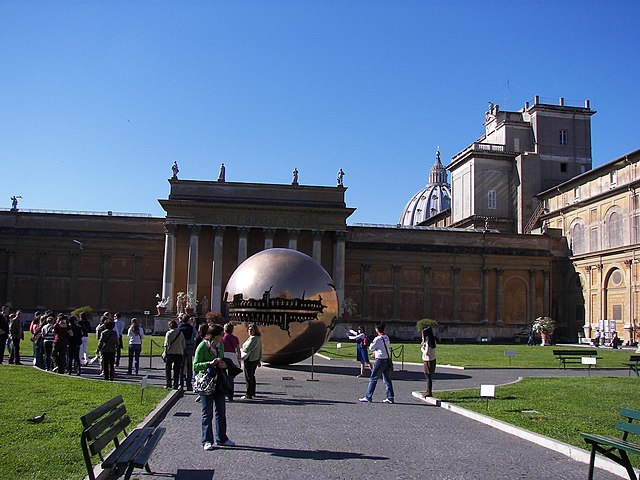The statue of Laocoön and His Sons, also called the Laocoön Group, has been one of the most famous ancient sculptures since it was excavated in Rome in 1506 and put on public display in the Vatican Museums, where it remains today. The statue is very likely the same one that was praised in the highest terms by Pliny the Elder, the main Roman writer on art, who attributed it to Greek sculptors but did not say when it was created. The figures in the statue are nearly life-sized, with the entire group measuring just over 2 m in height. The sculpture depicts the Trojan priest Laocoön and his sons Antiphantes and Thymbraeus being attacked by sea serpents.
Laocoön and His Sons
Oblique view
The other oblique view
The group as it was between c. 1540 and 1957, with Laocoön's extended arm; the sons' restored arms were removed in the 1980s.
The Vatican Museums are the public museums of Vatican City. They display works from the immense collection amassed by the Catholic Church and the papacy throughout the centuries, including several of the most well-known Roman sculptures and most important masterpieces of Renaissance art in the world. The museums contain roughly 70,000 works, of which 20,000 are on display, and currently employs 640 people who work in 40 different administrative, scholarly, and restoration departments.
The Vatican Museums as seen from the dome of St. Peter's Basilica
Vatican Museums from outside
Tourists in the Pinacoteca Vaticana
The Braschi Antinous is in the Sala Rotonda (Round Hall) of Pio-Clementine Museum.








